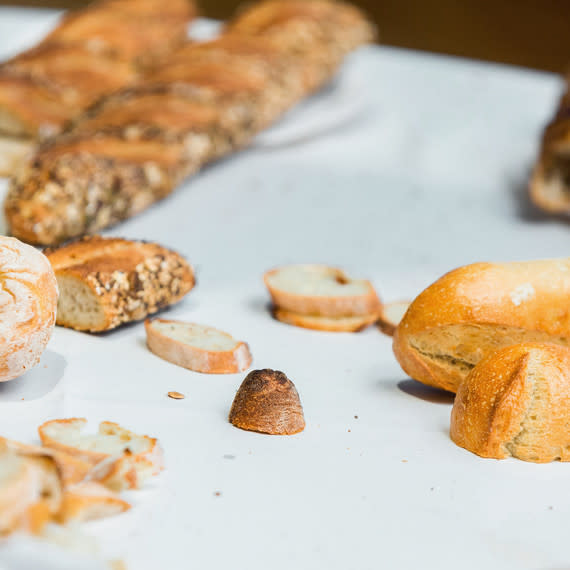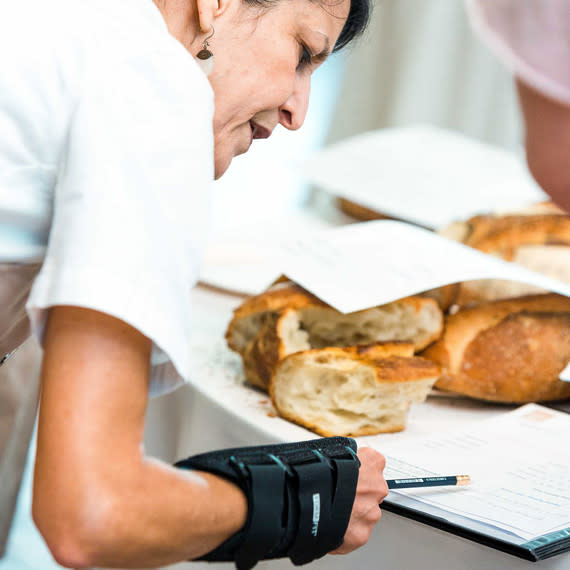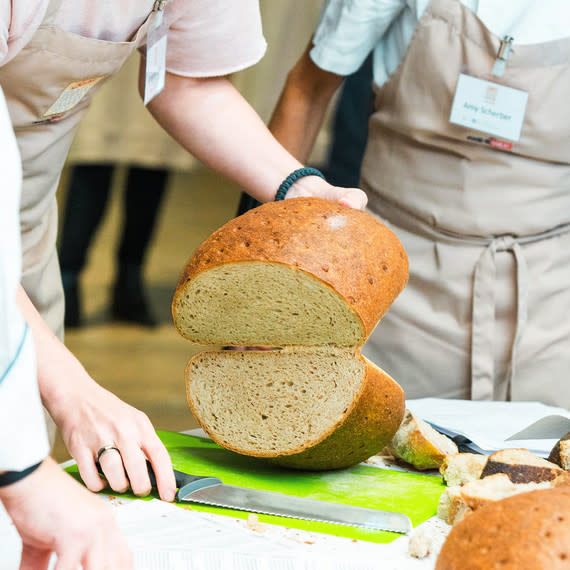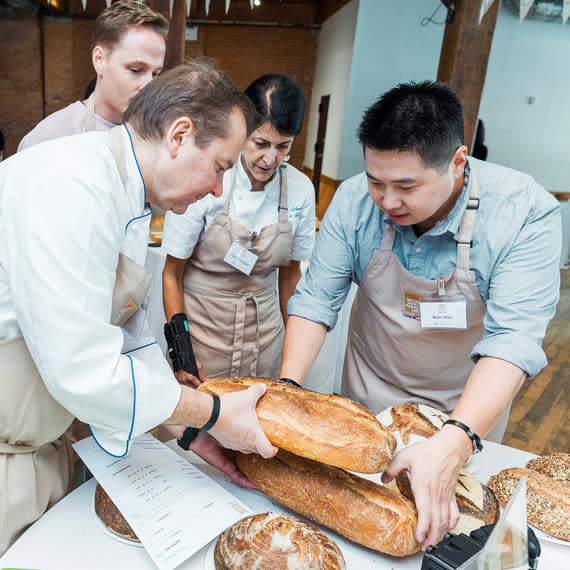At the World Bread Awards, Judging Sourdough

Find out what's been happening in the world of 42 Burners, aka our test kitchen, with our weekly series.
There are few things more satisfying in life than a freshly baked loaf of bread—you just can’t beat it, which is why I was so excited to be asked to judge the first World Bread Awards USA in New York. Organized by the American Bakers Association and the UK’s Tiptree and Food Is Great, it’s a competition for professional bakers with categories ranging from baguettes and ciabatta to bagels and pretzels. I got to judge the largest category, sourdough, which was great because it’s a classic, iconic loaf that bread-bakers feel really passionately about.

Each category was evaluated by a team of four, and it was nice to have people with different relationships to the food world as my fellow judges. Our team leader, Amy Scherber of the celebrated Amy’s Bread in New York, took us through a baker’s dozen of sourdough breads submitted from all over the country. I was in charge of wielding the bread knife and cutting each loaf open. Together we filled out a scorecard for the sourdoughs. We were told to judge the breads on their own merit, rather than against each other. Each sourdough started out with a score of 100, and we deducted points for anything we perceived as needing improvement.
(WATCH: This Throwback Video of Amy Making Lemon Bars with Martha)

There were five different criteria to consider, and each one required us to ask ourselves all sorts of questions. First was appearance: what’s your first impression upon looking at the bread? Does it whet the appetite? Are the shape and color enticing? Next was crust and bake: does the loaf have an even crust all the way around? Did it rise evenly? Does it look insipid, which means it wasn’t baked enough? Third was texture: how’s the crumb? When you press into a sourdough, it should spring back. If it doesn’t, it means it’s too moist and underbaked. Does the interior have a nice swirling patten or striations indicating that it wasn’t kneaded enough? The final two were aroma and flavor.

After we passed the cut bread halves around, we each tasted a small slice. I always feel like one bite isn't enough because sometimes you discover something new on the second bite, but after that, you’re not going to learn much more. We drank water in between the tastings to cleanse our palates. We were all in agreement about our favorite breads but weren’t sure which one would come out on top until after the scores were calculated. The winning loaf turned out to be by Julio Guarchaj, from Grandaisy Bakery right here in New York. It was a very traditional pane pugliese, that old-school, rustic oblong loaf that comes to mind when you think of sourdough. Guarchaj also won the awards for best ciabatta and best focaccia.
(TRY: Greg's No-Knead Tomato Focaccia Recipe)

The bake-off renewed my appreciation for all the effort that goes into a good loaf of bread. There are so many factors that can affect your results, from the temperature to the humidity, and it’s even trickier if you’re working with a natural starter—it’s a living ingredient after all! It takes a skilled baker to understand all those nuances and turn out a consistent product day after day. My starter is currently resting in the test-kitchen fridge, but it’s time to bring it out of hibernation. 'Tis the season for sourdough—a loaf makes the ultimate holiday gift!
(GET: Greg's Favorite Sourdough Recipe—Tartine Bakery's Country Bread)
Catch up on what happened in the world of 42 Burners last week.

